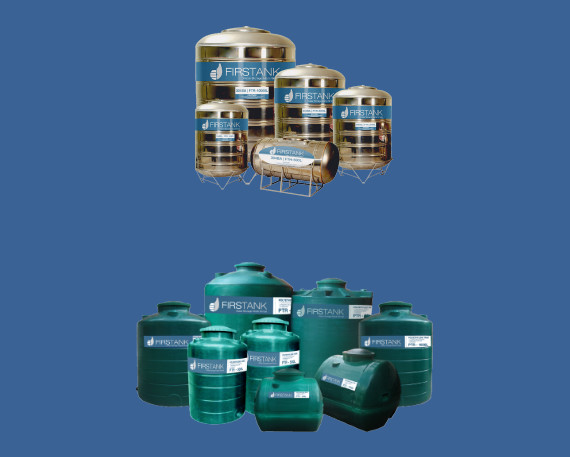Selecting the appropriate material for your liquid storage tank is crucial to ensure durability, longevity, and suitability for your specific needs. Among the various options available, two materials stand out: polyethylene and stainless steel. Both materials offer unique advantages and are commonly used in the construction of residential and commercial storage tanks.
In this article, we’ll explore the different features of the two to help you make an informed decision about which unit is right for your liquid storage needs.
If you’re looking for a corrosion-resistant unit…
… polyethylene tank is the ideal choice. This unit is highly resistant to corrosion and rust, making them suitable for storing a wide range of liquids, including water, chemicals, and agricultural fluids. This feature ensures the longevity of the tank, even in harsh environments or when storing corrosive substances.
If superior strength and durability are top priorities…
… you can’t go wrong with stainless steel tanks. These are renowned for their strength, durability, and long service life. They can withstand high pressures, temperature fluctuations, and physical impacts without deforming or compromising structural integrity, making them suitable for demanding applications.
If you prefer a lightweight and portable unit…
… choose a polyethylene tank. This is significantly lighter than stainless steel tanks, making them easier to transport, maneuver, and install. This makes polyethylene tanks ideal for remote or temporary storage needs, as they can be easily moved and relocated as required.
If your main concern is hygiene…
… go for a stainless steel tank. This unit is inherently hygienic and resistant to bacterial growth, making it ideal for storing potable water, food products, pharmaceuticals, and other sensitive liquids. The smooth and non-porous surface of stainless steel tanks prevents bacterial adherence and contamination, ensuring the purity and safety of stored liquids.
If you’re on a tight budget…
… polyethylene tank is the best purchase. It is generally more affordable than stainless steel tanks, making them a cost-effective option for budget-conscious consumers. Despite their lower upfront cost, polyethylene tanks offer excellent value due to their durability, longevity, and low maintenance requirements.
If aesthetic appeal is a non-negotiable…
… the best pick is a stainless steel tank. This unit offers a sleek and modern aesthetic that complements various architectural styles and environments. The polished finish of stainless steel tanks adds a touch of sophistication and elegance to residential, commercial, and industrial settings, making them a popular choice for visible or high-profile installations.
Bottomline
Choosing between polyethylene and stainless steel for your liquid storage tank depends on various factors, including your budget, specific requirements, and intended application. Polyethylene tanks offer affordability, corrosion resistance, and lightweight portability, making them suitable for a wide range of applications. On the other hand, stainless steel tanks provide superior strength, durability, hygienic properties, and aesthetic appeal, making them ideal for demanding industrial, commercial, and residential settings where durability and hygiene are paramount. Consider these factors carefully when selecting the material for your liquid storage tank to ensure optimal performance, longevity, and value for your investment.



